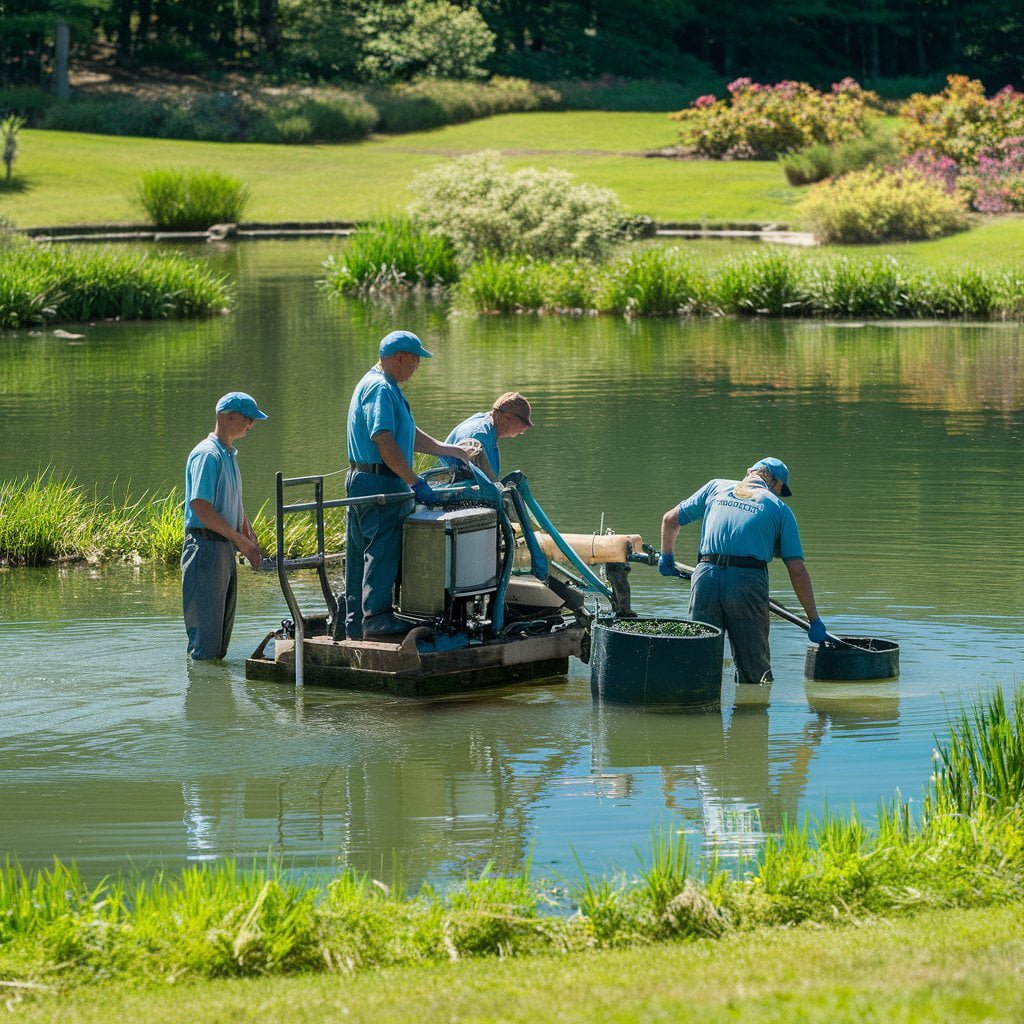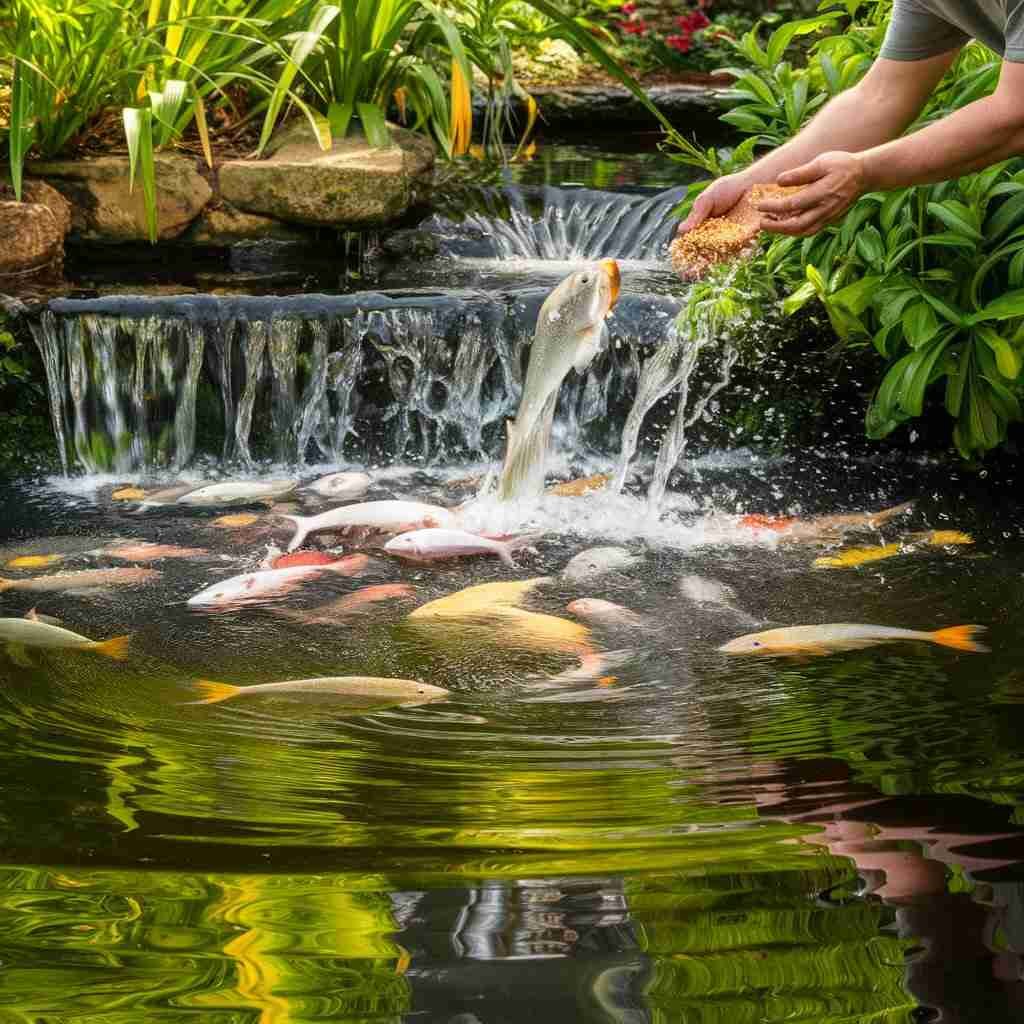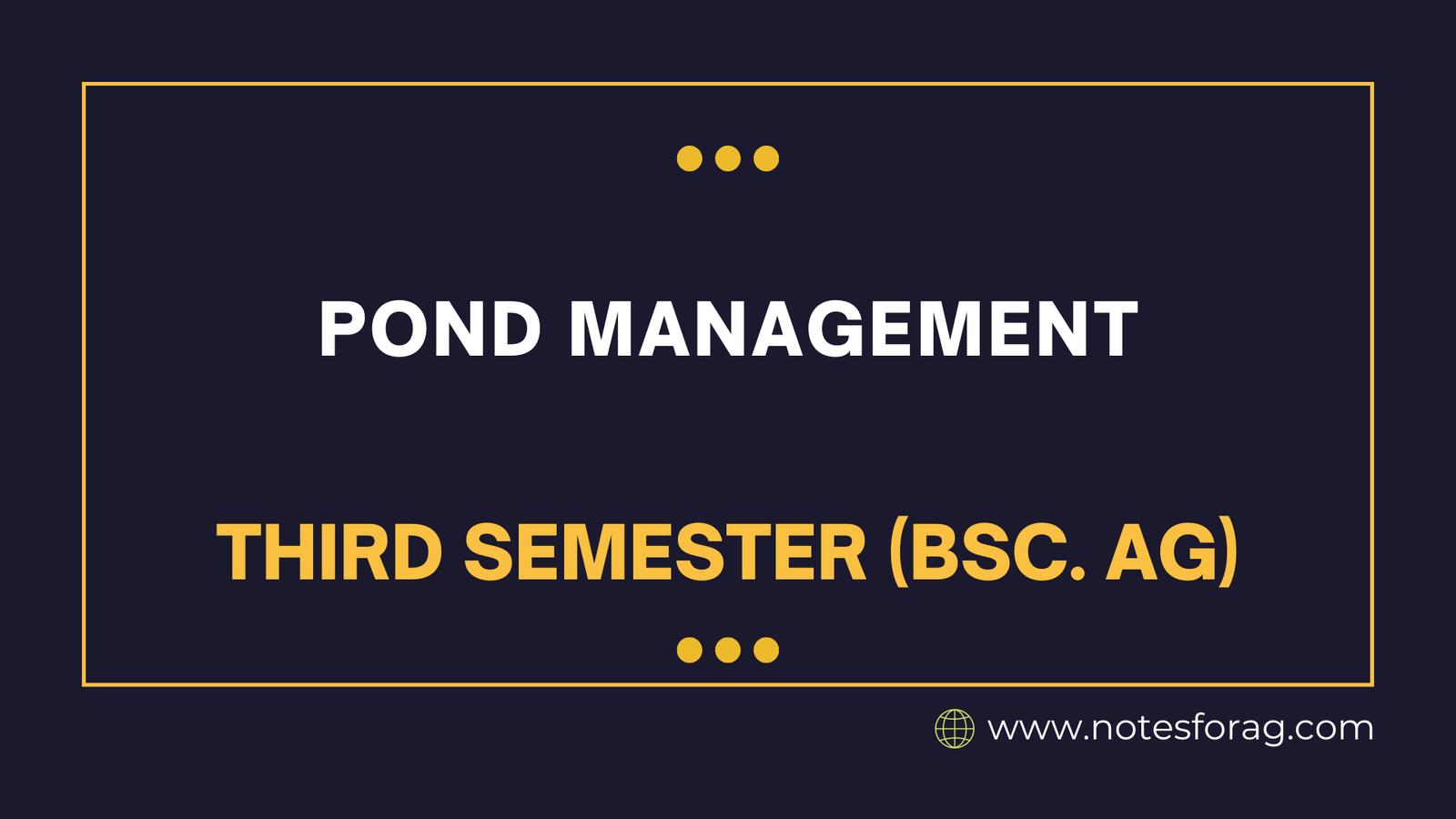Effective pond management promotes a healthy aquatic environment for fish cultivation. Begin by choosing a site with gradual slopes, clay-rich soil, a consistent water source, and easy access, while avoiding polluted areas. Liming the pond reduces acidity and improves soil and water quality. It is best done during construction or the dry season. Fertilization promotes plankton growth, providing a food source for fish; use fertilizers sparingly during the growing season. Regular feeding with species-specific commercial feeds should be tailored to the fish’s demands, with frequency and quantity adjusted to avoid waste.
Table of Contents
Introduction to Pond Management

Pond management refers to the systematic and deliberate techniques used to create and maintain an ideal pond environment for aquaculture. This comprises site selection for building, water quality management, liming, fertilization, feeding, aquatic weed control, and predator management. The goal is to maintain a thriving, productive habitat that promotes fish growth and sustainability.
Site Selection for Pond Construction
- Topography: Choose a site with gradual slopes for easier water management and drainage. Avoid steep slopes.
- Soil type: Choose soils with a high clay concentration (at least 20%) to improve water retention. Sandy or rocky soils are less desirable.
- Water Source: Ensure a dependable water source (such as streams, springs, or wells) with high water quality. Examine the water for pH, hardness, and pollutants.
- Accessibility: The property should be conveniently accessible for routine maintenance and harvesting.
- Proximity to pollution sources: To keep water quality high, avoid regions near industrial operations, agricultural runoff, and other sources of pollutants.
Liming
Liming is essential for adjusting the pH levels of pond water, thereby creating a conducive environment for aquatic life.
- Purpose: Liming neutralizes acidic soils, improves water quality, and enhances nutrient availability.
- Application: Test soil and water pH. Apply agricultural lime (calcium carbonate) if pH is below 6.5. Typical application rates range from 1 to 3 tons per acre, depending on soil acidity.
- Timing: Apply lime during pond construction or during the dry season when water levels are low. It can take several months for lime to fully react with the soil.
Fertilization
Fertilization complements liming by enhancing the nutrient availability in the pond, promoting the growth of phytoplankton, which forms the base of the aquatic food web.
- Purpose: Fertilization stimulates the growth of plankton, which is the foundation of the aquatic food chain.
- Types of Fertilizers: Use organic (manure, compost) or inorganic fertilizers (phosphorus, nitrogen, and potassium).
- Application: Begin with modest doses and gradually increase. Check the water for clarity; optimal visibility is 12-18 inches. Overfertilization can result in oxygen deficiency.
- Timing: Fertilize during the growing season (spring and summer). To prevent nutrient runoff, avoid during heavy rainfall seasons.
Feed and Feeding

Effective feed and feeding practices are crucial for successful pond management. The selection of appropriate feed types, understanding their nutritional content, and implementing proper feeding schedules all play a significant role in maintaining a healthy aquatic environment.
- Types of Feed: Use commercial fish feed designed for specific species. Protein content should correspond to fish requirements (e.g., 25-35% for tilapia).
- Feeding frequency: Feed fish two to three times per day. Feeding rates should be adjusted according to the fish’s size and the water temperature.
- Amount: Feed only what the fish can eat in 10-15 minutes to avoid waste and water quality issues.
- Monitoring: Check the health and behavior of your fish on a regular basis. Adjust your feeding routines accordingly.
Aquatic Weeds
Managing aquatic weeds and controlling predators are pivotal aspects of pond management. Aquatic weeds, if left unchecked, can swiftly overrun a pond, disrupting the delicate ecosystem balance.
- Identification: Identify the several types of aquatic weeds (algae, submerged plants, and floating plants).
- Control methods:
- Mechanical: Manual removal or the use of mechanical harvesters.
- Chemical: Use approved herbicides. To avoid causing harm to the fish, strictly follow the label directions.
- Biological: Introduce weed-eating fish (like grass carp) or other biological control agents.
- Prevention: To avoid excessive weed growth, maintain appropriate water quality and use correct pond management procedures.
Predator Control
Common predators include birds, such as herons and kingfishers, mammals like raccoons and otters, and invasive species such as the American bullfrog.
- Types of Predators: Birds (herons, kingfishers), mammals (otters, raccoons), and predatory fishes.
- Control methods:
- Exclusion: Install netting or fencing around the pond to keep predators away.
- Habitat modification: Remove any structures or vegetation that give cover for predators.
- Scare tactics: To prevent predators, use scarecrows, noisemakers, and decoys.
- Trapping: Use live traps to catch and relocate problem predators. Follow your local wildlife restrictions.
Pond management involves careful planning and regular upkeep. A productive and sustainable aquatic habitat can be created by choosing an appropriate site, regulating soil and water quality effectively, providing adequate nourishment, reducing weeds, and preventing predation.
Frequently Asked Question(FAQ)
Why is liming important in pond management?
Liming is important because it neutralizes acidic soils, improves water quality, and increases nutrient availability, resulting in a more favorable habitat for fish and plankton growth.
What is the ideal site for pond construction?
The ideal site for pond building has moderate slopes, clay-rich soil for water retention, a consistent and pure water source, easy access, and is free of pollution sources.
Related Articles

